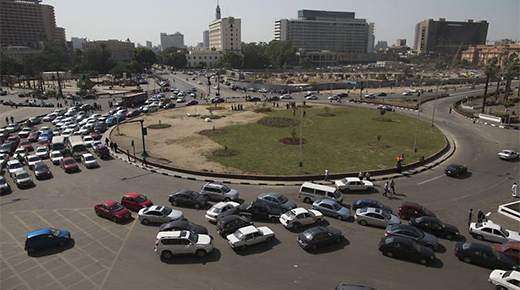
Recently, while on my way to the University of Pittsburgh’s campus, I made a quick “Pittsburgh left”—taking a left turn just as the light turns green—while facing a driverless car.
|
ADVERTISEMENT |
Instead of jolting forward or honking as some human drivers would be tempted to do, the car allowed me to go. In this case, the interaction was pleasant. (How polite of the car to let me cut it off!)
But as a sociolinguist who studies human-computer interaction, I started thinking about how self-driving cars will communicate with the human drivers they encounter on the road. Driving can involve a range of social signals and unspoken rules, some of which vary by country—even by region or city. How will driverless cars be able to navigate this complexity? Can they ever be programmed to do so?
…
Comments
comment
Thanks for sharing, I found the article very interesting and formative at the same time, I believe that it would be a good step forward in this market.
Autonomitis?
I thought the whole idea of autonomitis in motor vehicles was to provide a wiser altenative to managing safety than relying on human behaviour.
Many high risk industries understand the stupidity of relying on human stupidity as a risk mitigation. The safety imperative is always to create a safe system regardless of human behaviour. For example, in theory, traveling from A to B in reach of the controls of a car shouldn't be Russion Roulette. Drunk driving is stupid behaviour, so was drunk horse riding! The system should cope with it because it's entirely expected, so is going to sleep, eating, gazing at the view and so on... We are analogue beings, we get distracted, we ain't digital!
I fear vehicle "autonomitis" will promise much but achieve less until it infects also the systems responsible for the whole land tranport infrastructure. Many road configurations are lethal, yet those responsible for them escape investigation and conviction as the driver is the only potential culprit.
As for the "autonomitic" car taking account of human stupdity at a road juction, maybe one day a police app "extra" will appear that autonomously issues a ticket!
How do Human Drivers Interpret Them?
Why exactly does someone else’s autonomous vehicle need to “understand” me? When I walk into work to “push the green button” on my $2,500,000 autonomous manufacturing cell, it does not need to know I am not clear headed because was up late with a cold last night. The machine will do what the machine is supposed to do. The safety features designed into the machine will do what they are supposed to do. If I do what I am NOT supposed to do and defeat a safety feature to enter a “Do Not Enter” area, I am the one causing my accident. To expect a machine to account for “stupid human tricks” (as David letterman used to call them) is not only impractical it is entirely unreasonable.
Even today, if someone were to intentionally step off a curb into fast moving traffic, the driver of the car that strikes them is not held liable for the accident. The human has to own their part of the equation.
The rules of the road are the rules of the road. While the “Pittsburgh left” is apparently a common practice that makes it no less illegal (or rude). In the author’s scenario, the safety feature of that particular autonomous vehicle was proven effective. Had a less fortunate outcome been the result, the fault would lay with Mr. Soudi, not the other vehicle.
The easiest way to understand this is to remove the word “autonomous” from the vehicle description. In the above case, the author was simply lucky the other driver was willing to allow for the rude behavior and avoid an accident (we know all too well that all human drivers may not be that conscientious). Just because there were no hand gestures, honking or light flashing, does not change the outcome. The machines are programed to do he correct thing. Human drivers carry a legal accountability to do the right thing. The only variable with multiple degrees of freedom is the human driver.
Regarding the social interactions humans exchange while in their vehicles; not all do. Being insulted by a computer is tantamount to hating your hairbrush because it didn’t tell you how good you look.
Thanks,
M. Goodsell
Driver less cars
Some times comkents are more striking than the original artilce
thank you
Add new comment